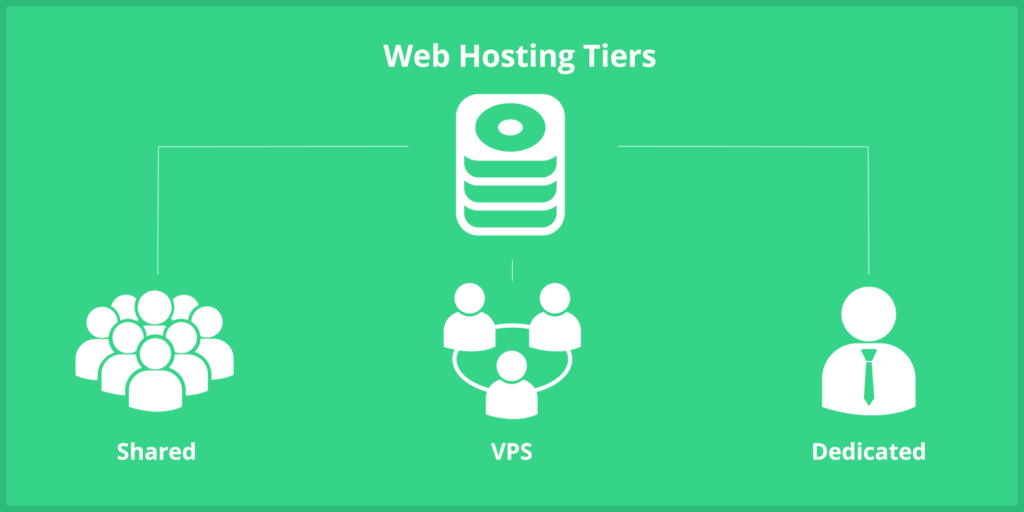Understanding inodes’ significance is essential for maintaining optimal website performance and ensuring seamless hosting experiences. In the realm of web hosting, discussions often revolve around bandwidth, storage space, and CPU usage. However, a critical yet frequently overlooked aspect is the inode limit.
What Are Inodes?
An inode, short for “index node,” is a data structure used in Unix-based file systems to store information about files and directories. Each inode contains metadata about a file or directory, such as its size, ownership, permissions, and timestamps. Notably, inodes do not store the file name or its actual data; instead, they provide the system with the necessary information to access and manage files efficiently.
In the context of web hosting, every file, folder, email, or script on your server consumes one inode. This includes hidden files and system files that may not be immediately visible to users.

How Inodes Work in Web Hosting Environments
In web hosting, particularly on shared servers, resources are allocated among multiple users. Each account is assigned a specific inode limit to prevent any single user from monopolizing server resources. When a file is created, uploaded, or received (such as an email), it consumes one inode. As websites grow and accumulate more files, like images, plugins, themes, and emails, the inode count increases.
Hosting providers monitor inode usage to ensure fair resource distribution and maintain server stability. Exceeding inode limits can lead to performance issues, affecting not only the individual account but potentially impacting other users on the same server.
Why Inode Limits Exist on Hosting Plans
Inode limits are implemented by hosting providers to manage server resources effectively. Without these limits, a single user could create an excessive number of files, leading to:
- Server Overload: An overwhelming number of files can strain server resources, slowing down performance for all users.
- Backup Failures: Large inode counts can cause backups to fail or be skipped, risking data loss.
- Security Risks: Excessive files may include outdated or vulnerable scripts, increasing security risks.
Protip: Hosting providers enforce inode limits to ensure that all users have access to reliable and efficient services.
The Consequences of Exceeding Inode Limits
Surpassing your inode limit can lead to several issues:
- Inability to Create or Upload Files: Once the limit is reached, you may be unable to add new files, affecting website updates and email functionality.
- Website Performance Degradation: High inode usage can slow down your website, leading to longer load times and potential downtime.
- Backup Complications: Exceeding inode limits may prevent your hosting provider from creating backups, leaving your data unprotected.
- Violation of Hosting Terms: Persistent overuse can breach hosting agreements, potentially resulting in account suspension.
It’s crucial to monitor and manage inode usage to avoid these detrimental effects.
Read Also: PHP Workers and Limits in Managed WordPress Hosting
How to Check Inode Usage on Your Hosting Account
Monitoring your inode usage helps prevent unexpected issues. Here’s how to check your inode count:
- cPanel Users:
- Log in to your cPanel account.
- Navigate to the “Statistics” section on the right-hand side.
- Look for “File Usage” or “Inode Usage” to view your current count
- Advanced Monitoring:
- Some hosting providers offer detailed inode usage tools within cPanel, allowing you to see inode counts per directory.
- For more in-depth analysis, you can use the terminal or SSH access to run commands that display inode usage across your account.
Protip: Regularly checking your inode usage ensures you stay within limits and maintain optimal website performance.
Common Causes of High Inode Usage
Several factors can contribute to excessive inode consumption:
- Email Accumulation: Each email stored on the server counts as one inode. Unmanaged inboxes can quickly inflate inode usage.
- Cache Files: Content management systems (CMS) and plugins often generate cache files, increasing inode counts.
- Backup Files: Storing multiple backups on the server consumes significant inodes.
- Log Files: Continuous logging without regular cleanup can lead to a high number of log files.
- Unused Themes and Plugins: Inactive or outdated CMS components still occupy inodes.
- Temporary Files: Installation processes and certain applications create temporary files that may not be automatically deleted.
Identifying and managing these factors can help control inode usage effectively.
Best Practices to Manage and Reduce Inode Usage
Implementing the following strategies can help maintain inode usage within acceptable limits:

- Regular Cleanup: Delete unnecessary files, emails, and backups from your hosting account.
- Optimize Email Management: Use email clients to download and store emails locally, reducing server storage.
- Limit Backup Retention: Store only essential backups on the server and remove outdated ones.
- Manage Cache Files: Configure caching plugins to limit the number of stored files and enable automatic cleanup.
- Remove Unused CMS Components: Delete inactive themes and plugins to free up inodes.
- Monitor Log Files: Set up log rotation and automatic deletion of old logs.
- Use External Storage: Store large media files on external platforms or content delivery networks (CDNs).
Adopting these practices ensures efficient inode usage and enhances overall website performance.
Choosing the Right Hosting Plan Based on Inode Needs
Selecting a hosting plan that aligns with your inode requirements is vital:
- Shared Hosting: Suitable for small websites with low inode usage. Be mindful of strict inode limits.
- VPS Hosting: Offers higher inode limits and greater control, ideal for growing websites.
- Dedicated Hosting: Provides the highest inode capacities, suitable for large websites with extensive file needs.
- Cloud Hosting: Scalable solutions that can adjust inode limits based on your website’s growth.
Assess your website’s current and projected inode usage to choose a hosting plan that accommodates your needs.
How Hosting Providers Handle Inode Limits
Hosting providers typically enforce two kinds of inode limits:
Types of Inode Limits
#1. Soft Inode Limits is more lenient and provides a buffer period during which users can exceed their inode allocation slightly. This is common in shared and managed hosting environments. Soft limits are designed to give users a chance to manage their usage without immediately affecting service availability.
The soft limit is often accompanied by:
- Email Alerts: Providers notify users when they approach or exceed the inode limit.
- Grace Periods: Users are given time to clean up files and bring inode usage back within limits.
- Warnings in Control Panel: A red or yellow warning may appear on the dashboard, showing the percentage of inode capacity used.
#2. Hard Inode Limits are strict and non-negotiable. Once it’s reached, no additional files or folders can be created. Hard limits are enforced in more resource-sensitive environments or when users consistently exceed soft limits without taking corrective action
This can result in:
- Inability to upload files or install plugins
- Failure of email delivery (new emails won’t be stored)
- Problems generating temporary files or cache
- Website errors or limited functionality
.
Hosting Tiers and Their Inode Policies
Inode policies vary based on the hosting type:

Shared Hosting
- Strictest inode limits due to the multi-tenant nature of shared servers.
- Usually suitable for small sites or blogs with limited storage and file operations.
- Frequent inode overuse on shared plans can lead to throttling, temporary account suspension, or forced upgrades.
VPS Hosting
- Provides more inode headroom because resources are allocated more generously.
- Users have access to terminal commands or advanced control panels to manage inode counts.
- Still subject to limits, especially if the server is oversold or used for hosting multiple sites.
Dedicated Hosting
- Most flexible inode limits, often determined by the underlying file system and storage space.
- Suitable for large businesses, e-commerce platforms, or data-intensive sites.
- Inode issues are rare unless there is poor file management or log rotation.
Cloud Hosting
- Inode limits are dynamic or scalable depending on the storage volume.
- Providers like AWS, Google Cloud, and DigitalOcean often don’t use “inode” terminology but impose metadata or object limits that serve a similar purpose.
- Best for developers or businesses needing elastic resources.
Read Also: Understanding Server Load Averages
How Overuse is Addressed
If a user exceeds inode limits, hosting providers typically follow a protocol:
- Notification: A warning email is sent outlining the inode overuse and potential impacts.
- Temporary Restrictions: Uploads may be blocked, or email services may be paused.
- Manual Intervention Required: The user is advised to reduce inode usage by deleting unnecessary files, clearing caches, or removing old backups.
- Account Suspension (in severe cases): Continued overuse without corrective action can result in account suspension or forced plan upgrades.
- Plan Upgrade Recommendation: Users may be advised to upgrade to VPS or dedicated hosting for higher inode allocations.
Inodes and Website Performance Optimization
Efficient inode management directly impacts website performance:
- Faster Load Times: A streamlined file system reduces server response times.
- Reliable Backups: Maintaining inode limits ensures successful and timely backups.
- Enhanced Security: Regular cleanup minimizes outdated files that could pose security risks.
- Improved User Experience: Optimal performance leads to better user engagement and satisfaction.
Prioritizing inode management is a crucial aspect of website optimization strategies.
Conclusion
Inode limits play a pivotal role in web hosting, influencing website performance, security, and scalability. By understanding what inodes are, how they function, and implementing best practices for management, website owners can ensure efficient operation and avoid potential pitfalls associated with exceeding inode limits. Regular monitoring, strategic planning, and choosing the appropriate hosting plans are key steps toward maintaining optimal inode usage and delivering a seamless user experience.

